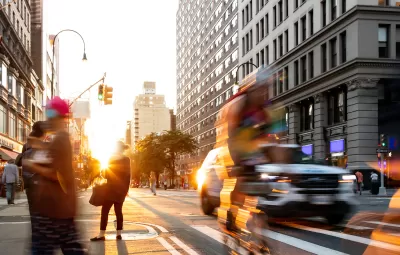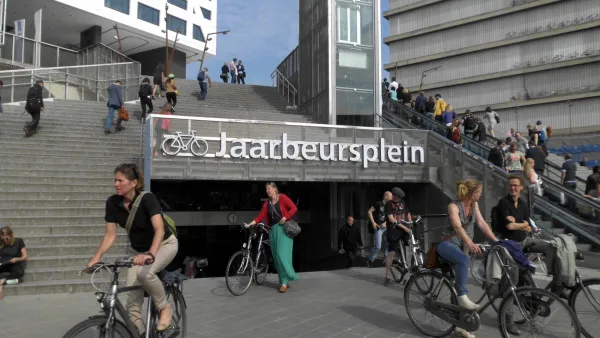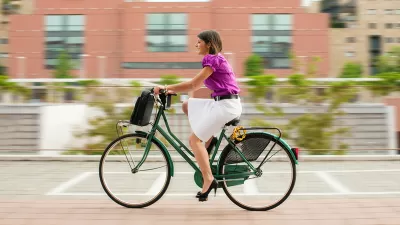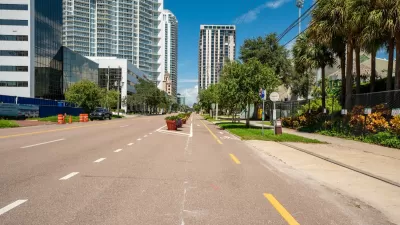Rolling stops by bicyclists get a bad rap, particularly among motorists who perceive them to be breaking the law. But new research shows laws that allow for rolling stops for cyclists do not lead to unsafe behavior by either group.

According to a study out of Oregon State University, “Laws that let bicyclists treat stop signs as yield signs lead neither riders nor motorists to act unsafely,” according to a new story out of the university’s newsroom. According to the study’s leader, David Hurwitz, the findings are important as more and more states consider bicycling rolling-stop legislation. Rolling stop advocates say rolling stops allow riders to keep their momentum through intersections — where nearly half of all bicycle-car crashes happen — “theoretically reducing intersection congestion and crash risk because the cyclists are getting through the intersection faster,” the article explains.
The project was conducted by the OSU College of Engineering and used a “novel experimental technique” of linking separate bicycle and motor vehicle simulators, running 60 subjects in pairs simultaneously, and having each subject interact with an avatar of the other in a virtual world. The pairs went through 16 “live-interaction scenarios related to a bicyclist and motorist encountering one another at a four-way, stop-controlled intersection, according to the article. Study lead Hurwitz said they evaluated safety-relevant behaviors associated with laws stemming from the “Idaho stop,” which was passed in 1982 but largely ignored around the country until 2017 when seven states enacted bicycle rolling stop laws.
“The focus of previous research has been crash-data analysis and why riders are motivated to do a rolling stop even when it’s illegal in their state … No one has looked at how well bicycle rolling-stop laws work, or what happens when you educate people about them. Our networked simulator study design let us evaluate driver and rider behavior and their understanding of the law,” Hurwitz told the Oregon State University Newsroom. Their findings also indicate outreach and education about rolling stops would be useful: After receiving education about rolling-stop laws, Hurwitz said bicyclists preferred to yield rather than stop and went through intersections faster, while drivers approached intersections either more slowly or at a similar speed instead of becoming aggressive toward cyclists they would have previously perceived as breaking the law.
FULL STORY: Bicycle rolling-stop laws don’t lead to unsafe behavior by riders or motorists, research shows

Planetizen Federal Action Tracker
A weekly monitor of how Trump’s orders and actions are impacting planners and planning in America.

Map: Where Senate Republicans Want to Sell Your Public Lands
For public land advocates, the Senate Republicans’ proposal to sell millions of acres of public land in the West is “the biggest fight of their careers.”

Restaurant Patios Were a Pandemic Win — Why Were They so Hard to Keep?
Social distancing requirements and changes in travel patterns prompted cities to pilot new uses for street and sidewalk space. Then it got complicated.

Platform Pilsner: Vancouver Transit Agency Releases... a Beer?
TransLink will receive a portion of every sale of the four-pack.

Toronto Weighs Cheaper Transit, Parking Hikes for Major Events
Special event rates would take effect during large festivals, sports games and concerts to ‘discourage driving, manage congestion and free up space for transit.”

Berlin to Consider Car-Free Zone Larger Than Manhattan
The area bound by the 22-mile Ringbahn would still allow 12 uses of a private automobile per year per person, and several other exemptions.
Urban Design for Planners 1: Software Tools
This six-course series explores essential urban design concepts using open source software and equips planners with the tools they need to participate fully in the urban design process.
Planning for Universal Design
Learn the tools for implementing Universal Design in planning regulations.
Heyer Gruel & Associates PA
JM Goldson LLC
Custer County Colorado
City of Camden Redevelopment Agency
City of Astoria
Transportation Research & Education Center (TREC) at Portland State University
Camden Redevelopment Agency
City of Claremont
Municipality of Princeton (NJ)





























